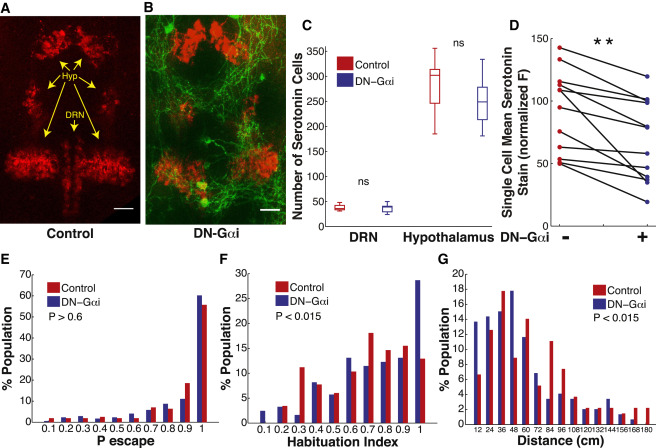
Neuromodulatory regulation of behavioral individuality in zebrafish
Abstract
Inter-individual behavioral variation is thought to increase fitness and aid adaptation to environmental change, but the underlying mechanisms are poorly understood. We find that variation between individuals in neuromodulatory input contributes to individuality in short-term habituation of the zebrafish (Danio Rerio) acoustic startle response (ASR). ASR habituation varies greatly between individuals, but differences are stable over days and are heritable. Acoustic stimuli that activate ASR-command Mauthner cells also activate dorsal raphe nucleus (DRN) serotonergic neurons, which project to the vicinity of the Mauthner cells and their inputs. DRN neuron activity decreases during habituation in proportion to habituation and a genetic manipulation that reduces serotonin content in DRN neurons increases habituation, whereas serotonergic agonism or DRN activation with ChR2 reduces habituation. Finally, level of rundown of DRN activity co-segregates with extent of behavioral habituation across generations. Thus, variation between individuals in neuromodulatory input contributes to individuality in a core adaptive behavior.